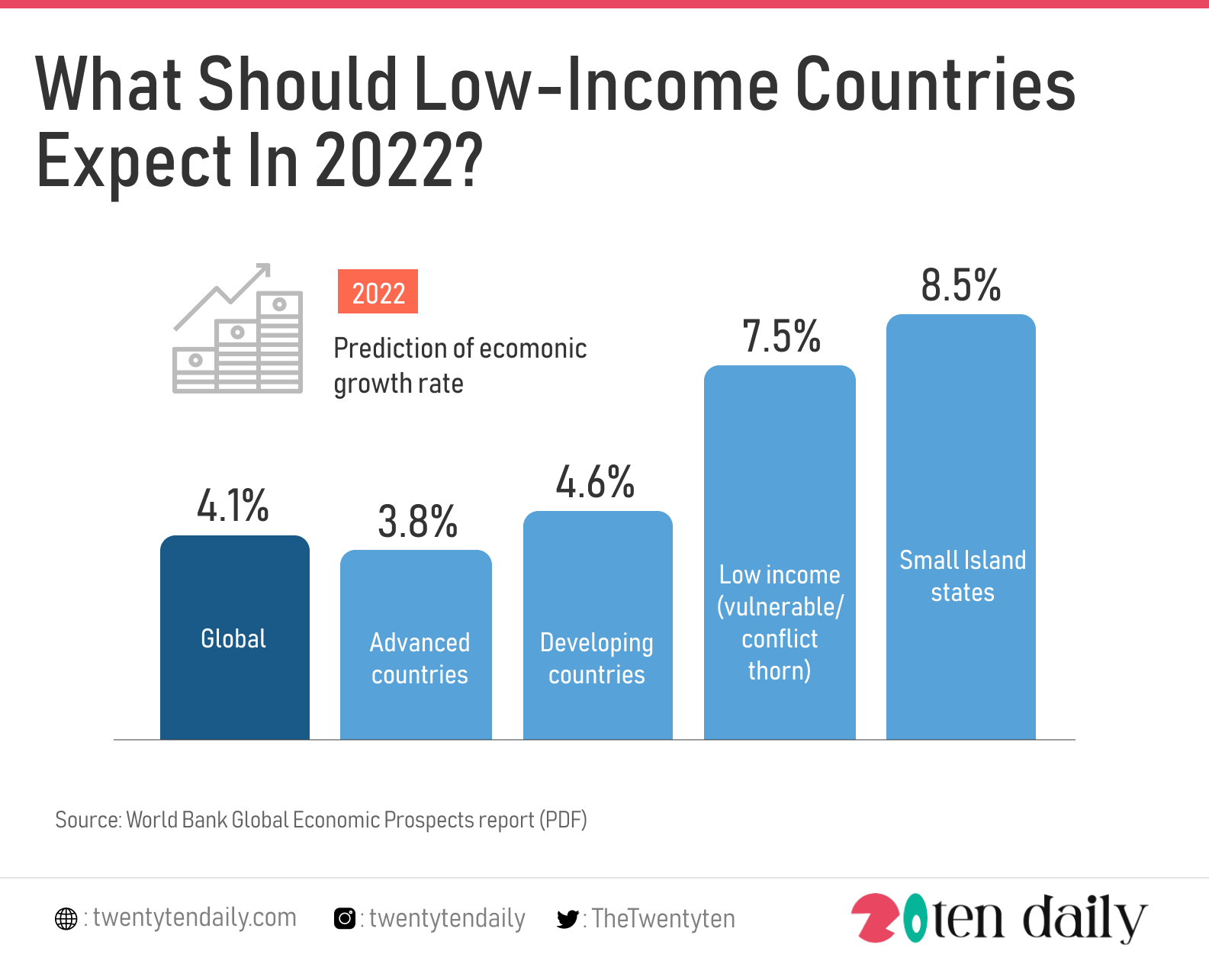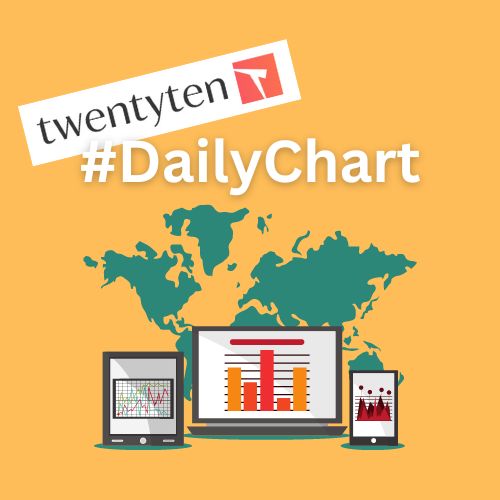What Should Low-Income Countries Expect In 2022?
The World Bank in its latest Global Economic Prospects report (PDF) predicts a fall in global economic growth from 5.5 percent in 2021 to 4.1 percent in 2022.
While the economic growth rates in advanced countries are said to be sufficient to restore output and investments with a downward trend of 5 percent last year to 3.8 percent this year and 2.3 percent in 2023, economic growth rates in emerging and developing countries like China are forecasted to drop from 6.3 percent in 2021 to 4.6 percent in 2022 and 4.4 percent in 2023 – leaving economic growth in those countries 4 percent below their pre-pandemic trend.

Vulnerable and conflict-affected countries should expect the economic growth rates to drop at 7.5 percent below their pre-pandemic trend, while the output of small island states will be 8.5 percent below its previous trend.
Experts say pre-pandemic economic growth which relied heavily on vaccine rollout has now been stunted due to the constant emergence of tougher variants. This reveals the risk of worsening the divisions among underdeveloped and developing nations and their advanced counterpart.
The WEF reports show a yawning gap between wealthy countries and their counterparts as seen with vaccine rollout. For instance, Africa’s 52 countries — home to 20 percent of the world’s population, has only 6 percent of the population vaccinated (compared to 69.9 percent in high-income nations).
The report has warned that this trend would be worse by 2025 if developed countries do not help out. As part of its solution, the bank is calling for nations to prioritize coronavirus vaccine equity to bring the pandemic “under control” as well as accelerate debt relief efforts to help low-income countries that are under stress.



